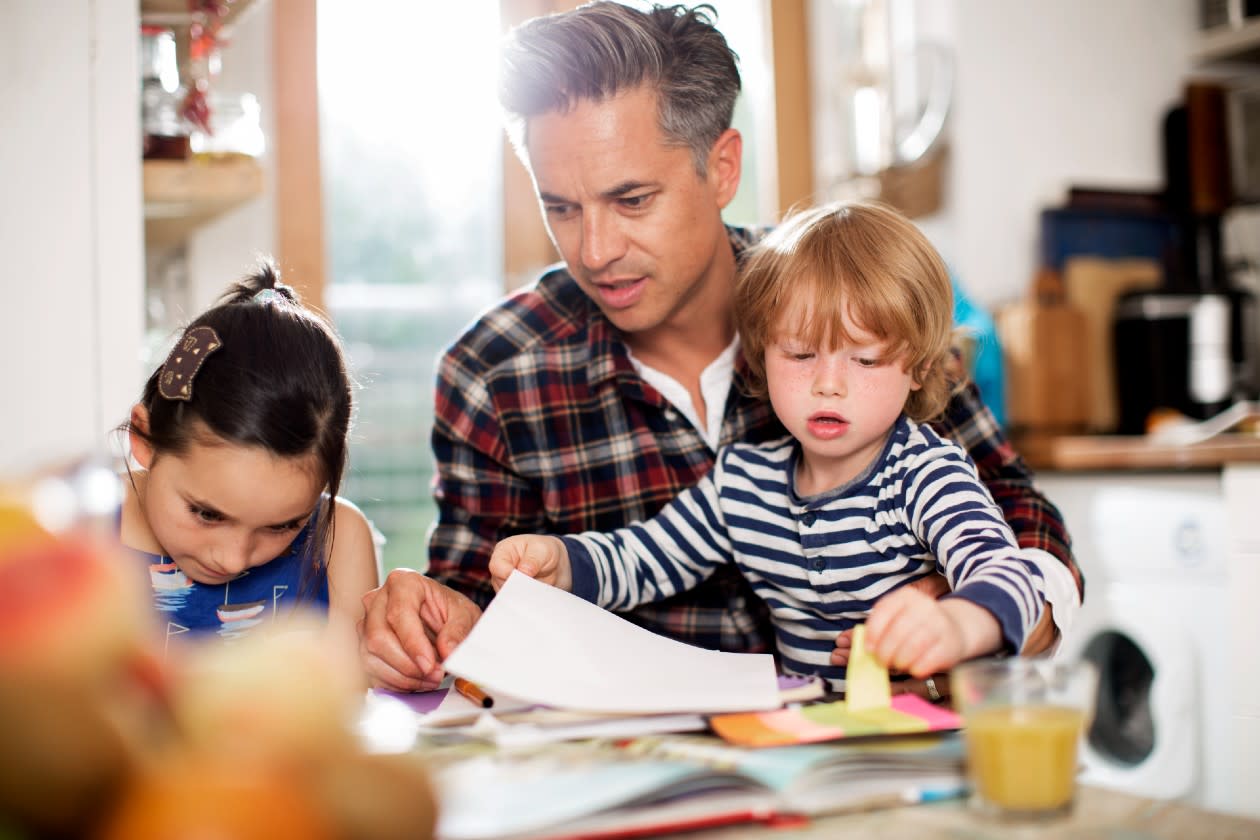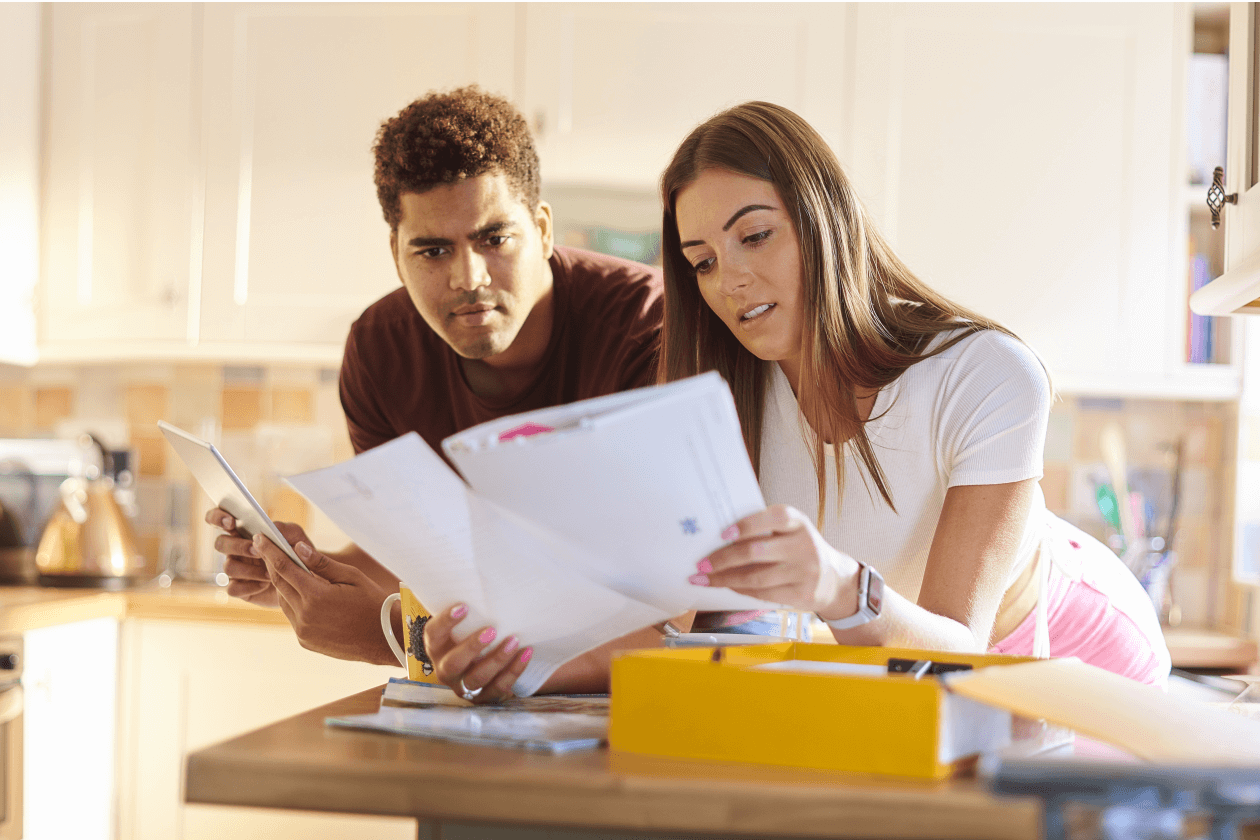On average, couples who plan together have £3,196 in savings accounts – more than twice as much as those who say they plan alone (£1,366) or leave it to a partner (£340).
Couples who plan together have on average £351 left at the end of the month – £92 more than those who leave things to their partner.
As the end of the tax year approaches, here are some of the things you could discuss to help make your money go further.
This article isn’t personal advice. If you’re not sure an action is right for you, ask for financial advice. Remember, ISA, pension and tax rules can change, and benefits depend on individual circumstances.
Are you saving enough as a couple?
Drawing up a budget and setting out how much you want to spend and hope to save can be really helpful. As long as you stick to it.
One helpful way to think about it is – 50-60% of income should be spent on essentials like rent/mortgage, bills and food. 20% should be saved or invested and 20-30% can go on fun things like luxuries, hobbies and holidays.
We’d suggest most people keep at least three to six months’ worth of cash aside for emergencies.
You might need to have conversations about the sacrifices you’re willing to make and where you’re willing to compromise.
For help, try our household budget calculator.
Once you’ve realised how much you’re looking to save, you could consider trying to make the most of your money.
If you’re looking for great Cash ISA rates, it’s always worth seeing what’s available from smaller banks and building societies. That’s where you’ll often find some of the best deals.
A Cash ISA savings platform, like HL’s Cash ISA, brings together some great rates from smaller banks and building societies, all through one easy-to-use online account.
And you can save up to £20,000 each tax year tax-free in a Cash ISA.
Do you have the same homeownership goals?
Maybe you’re thinking of moving in together. Maybe you’re planning to buy somewhere.
One way to get a boost buying your first home is to use a Lifetime ISA. You get a government bonus of £1 for every £4 put in and you can put in up to £4,000 each tax year, which forms part of your overall £20,000 ISA allowance.
If you both were to do that and put in the max, you could get £2,000 from the government each year.
If one person in the couple already owns their first home, the other can still use their Lifetime ISA towards the purchase, without a penalty if it’s their first home.
A 25% government charge only applies when withdrawals are made before age 60 that aren’t for a qualifying first home purchase, so you could get back less than you put in.
What are our plans for retirement?
You might think you’re a way off from this, but planning for retirement together is the ultimate long-term commitment.
Talking through retirement, including your plans and what you expect is vital.
It’s always a good idea to build up your own separate pensions. If you rely on one person’s pension, no matter how good it is, you could run into trouble later on if you split up.
Building up pensions separately means you can make use of your separate allowances – you can pay up to £60,000 per year into a pension and benefit from tax relief – and employer contributions to build your pensions more quickly.
Even if your partner isn’t working, you can boost their self-invested personal pension (SIPP) by contributing up to £2,880 per year with the government increasing it to £3,600 through tax relief. It’s a great way to improve your family finances if you have used up your own allowances.
Pooling your resources means your money goes much further in retirement too as you spread costs between you. If you both received the full state new State Pension for example, you’d likely have a base income of £23,000 between you, which can go a long way to covering your basics – with your own pension provision boosting your lifestyle considerably.
You also have your own personal allowance of £12,570 before you need to pay any income tax.
Just remember, you usually can’t access a private pension until age 55 (rising to 57 in 2028). This is different to the State Pension – to see what State Pension you could get, you can get a State Pension forecast from the government online.
Take advantage of our special offers. See what’s available for new and existing HL clients. Terms apply.
Are there perks to tying the knot?
If you’re married or in a civil partnership, there are some perks available.
Firstly, the marriage allowance.
If you’re a basic-rate taxpayer, you can transfer £1,260 of your personal allowance to your partner which can reduce their tax by up to £252 a year.
To benefit as a couple, the lower earner must normally have an income below the personal allowance (£12,750 this tax year). You could pay more tax individually, but as a couple you could still pay less.
There are other benefits too.
For example, transfers of assets like shares or funds between spouses don’t qualify as disposals for capital gains tax purposes.
This means you can transfer assets between each other to make the most of each other’s capital gains allowances (£3,000 this tax year) when selling them. This is sometimes known as a ‘bed and spouse’.
You can use transfers of assets to make the most of other allowances too, like the dividend allowance (£500 this tax year).
You can also move around cash if you want to make the most of the savings allowance, which is £1,000 for basic-rate taxpayers and £500 for higher-rate taxpayers. There’s no savings allowance for additional-rate earners.
Additionally, if one spouse is a basic-rate taxpayer and the other is a higher or additional-rate taxpayer, you could take advantage of different rates for capital gains tax and income tax by moving assets around.
What about kids?
If you’re planning on having children or have already got them, it’s worth considering your planning for them.
Gifting money to children can form part of inheritance tax planning, but also putting money aside can help them in later life.
How to cut your inheritance tax bill>
This might include investing on their behalf.
Children have time on their side, so in many cases it’s better to invest than save for a child. One way to do this is a Junior Stocks and Shares ISA where they get access at age 18.
Over a period of five years or more, investments usually give you a higher return compared to cash savings. In fact, there’s over 100 years of data showing that for 91% of 10-year periods, investments in shares have done better than holding cash. Although whilst cash is guaranteed, investments will rise and fall in value so you could still get back less than you invest.
Even small amounts tucked away can build up a substantial nest egg, so the sooner you start putting money away for your child, the better.

No account charges or online dealing commission. Other charges depend on investments chosen.
Manage all your family’s accounts with one log in
Start from just £100 lump sum or £25 a month
Invest for your child’s future with our award-winning Junior ISA
Could our advisers help you both?
Sometimes planning together requires advice. Our financial advisers often help couples.
A call with our advisory helpdesk is the first important step towards getting advice. It will help you:
Discover if advice is right for you
Understand the benefits and cost
Decide which of our advisory services might suit you best
The Active Savings account and the HL Cash ISA are provided by Hargreaves Lansdown Savings Limited (company number 8355960). Hargreaves Lansdown Savings Limited is authorised by the Financial Conduct Authority under the Electronic Money Regulations 2011 with firm reference 901007 for the issuing of electronic money.
Hargreaves Lansdown Asset Management Limited and Hargreaves Lansdown Savings Limited are subsidiaries of Hargreaves Lansdown plc (company number 2122142).



